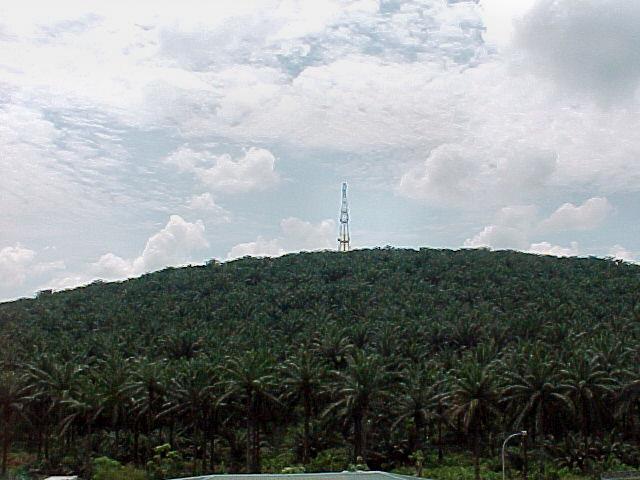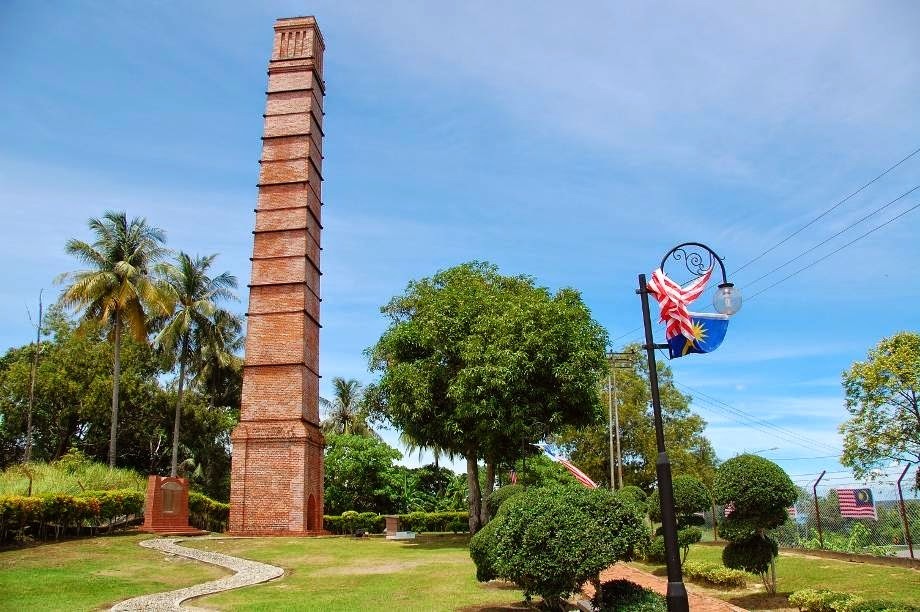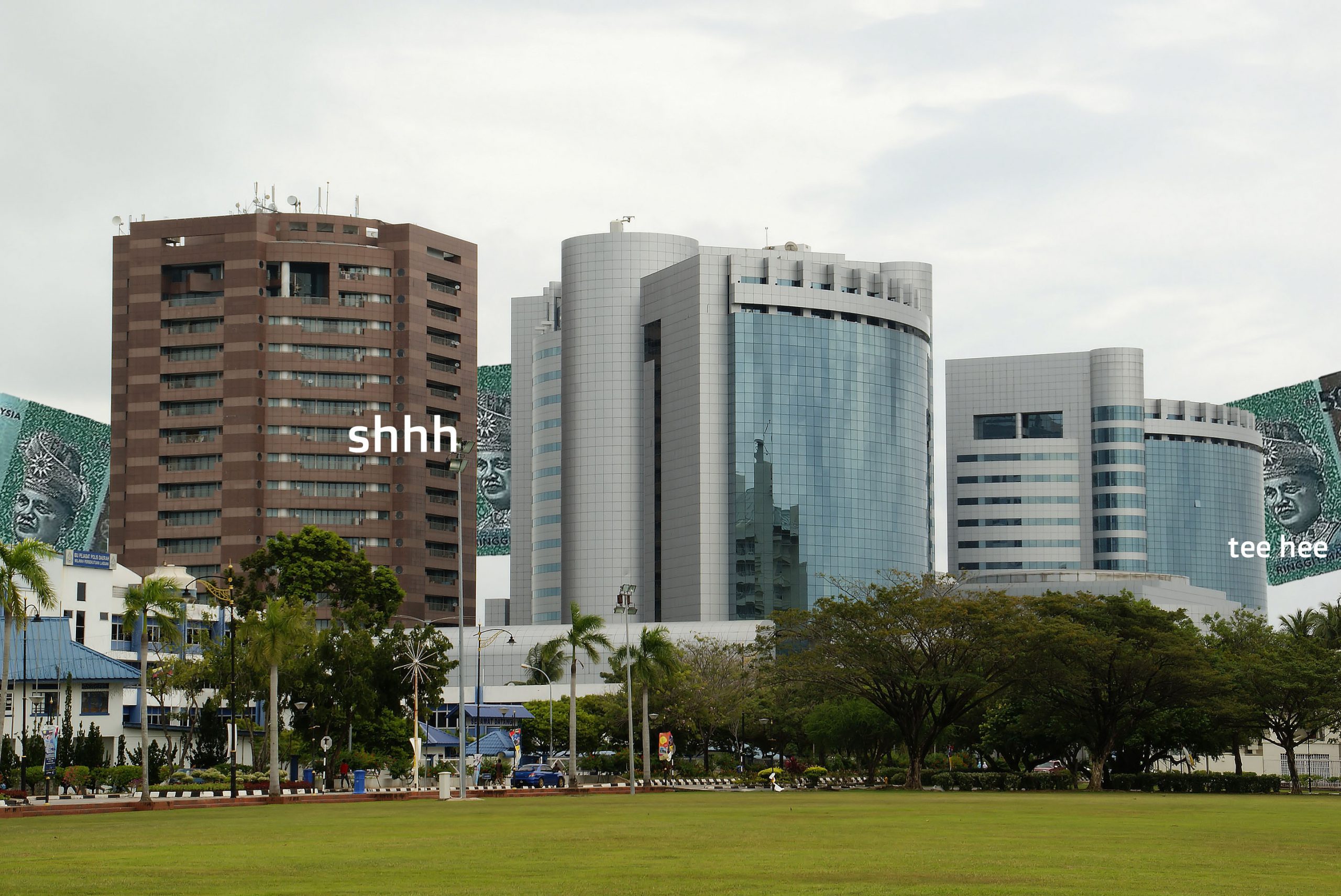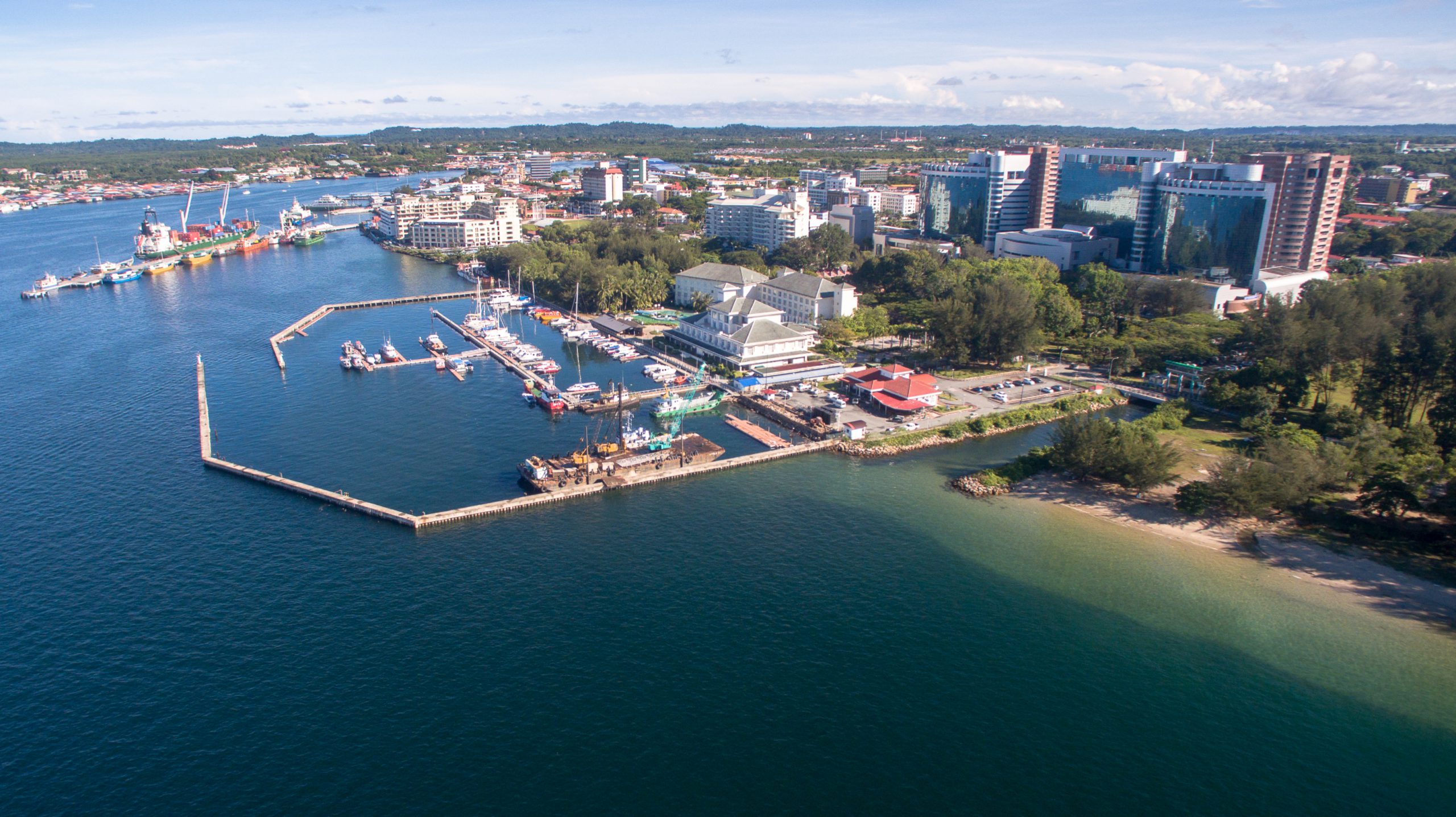In 1984, Sabah gave up Labuan to make it a Federal Territory. But why?

- 835Shares
- Facebook747
- Twitter14
- LinkedIn18
- Email18
- WhatsApp38
Quick! Try and think of three facts about Labuan other than it being a Federal Territory in East Malaysia.
Most Malaysians would probably say that it’s an island, and a duty-free one at that. Those of us who procrastinate on Google Maps might say that it’s shaped like a triangular cat. But compared to KL and Putrajaya, Labuan may not be as well known, especially to West Malaysians.

Which is a shame, really. Labuan has one of the most colorful histories in Malaysia, first being part of Brunei in the 1800s until it was taken (or given to) the British Crown. World War II saw its name being briefly changed to Maida Island (or Maidashima, after a Japanese commander who conquered it) before going to Labuan under the British military.
It was also briefly put under the administration of Singapore, and it used to be the lesser-known member of the Straits Settlements. Somehow, it became part of Sabah right before Sabah became part of Malaysia, and in the 1980s, it was given up by the Sabah government to become a Federal Territory.
But why was Labuan made into a Federal Territory? Actually, why are any of the Federal Territories… Federal Territories? There are reasons for this, and…
For Kuala Lumpur and Putrajaya, it was for politics and for convenience

In Malaysia, Federal Territories are areas that fall under the direct jurisdiction of the Federal Government (as opposed to being under a state government’s rule), and before 1974, Malaysia had no Federal Territories. As you can probably guess, the first Federal Territory was Kuala Lumpur, after the Sultan of Selangor at that time signed an agreement giving up the area to the Federal Government.
Based on what we can find, the reason was political. After the 1969 elections, the then opposition Democratic Action Party (DAP) won a majority in Selangor, causing problems for the federal government in Kuala Lumpur. The move to make Kuala Lumpur a Federal Territory was to ensure that the country’s capital will always be under the ruling government.
Kuala Lumpur wasn’t exactly planned as an administrative center, and government offices back then were scattered throughout Kuala Lumpur. With increased traffic congestion, this kinda interfered with the administrative process, so to make things smoother and take some load off Kuala Lumpur, the administrative center of the government was relocated to a new place in Sepang, called Putrajaya.

Putrajaya became a Federal Territory in 2001, and while Malaysia’s administrative center was moved there, Kuala Lumpur still remains as our legislative center, as well as where our Agong resides. Chronologically, Putrajaya is the third Federal Territory. Labuan became one in 1984, exactly a decade after Kuala Lumpur. And while Kuala Lumpur became a Federal Territory because of politics and Putrajaya because of convenience, Labuan’s reason was a bit more interesting…
Labuan was meant to be as successful as Singapore and Hong Kong
In its pre-Malaysia days, Labuan wasn’t too shabby: its got a natural harbour and a ship repair yard, which made it an important stop for maritime traders. Its most famous landmark, a chimney, stood as a testament to its former brick industry. Labuan used to have coal mines, and it was once a coaling station (like petrol pumps, but for coal-powered ships) for the British Royal Navy. It has also been duty free since British times.

However, it would seem that Labuan had declined somewhat since the colonial days. Hoping that the Federal Government can help return Labuan to its former glory, the Sabah government in 1984 had given Labuan to be made as a Federal Territory, and according to Fauziah Datuk Din, an activist whose father Datuk Din Jaffar had disagreed over the Federalization of the island, there were dreams of Labuan reaching the same success as Singapore and Hong Kong back then.
“When Labuan was given to Federal rule it was without any compensation unlike Kuala Lumpur. The understanding was that in return, Federal create the stimulus to accelerate economic growth on the island and this conjured up dreams of Labuan becoming a little Singapore or Hong Kong.” – Fauziah Datuk Din, as quoted by Daily Express.
So Labuan was gazetted as a Federal Territory on the 16th April, 1984. However, the Federal government did not know what to do with Labuan yet when they first got it. At the time, five options were considered:
- make Labuan the headquarters of the East Malaysia military command
- expand the island’s existing shipbuilding industry
- develop Labuan’s tourism industry
- build a major convention center
- set up a tax haven based financial center
It took five years, but the Federal government finally decided in 1989 to pick the fifth option and turn Labuan into an International Offshore Financial Center (IOFC), and at the same time do points 2 through 4 as well, because why not. And if the word ‘offshore’ raised alarm bells in your head, you might be wondering…
Wait. Was Labuan built as a place for hiding money?

Not necessarily. The prevailing notion about ‘offshore’ is like where hitmen keep their retirement money or where people who don’t want to pay taxes establish shell companies, but that’s only half of the story. While there isn’t an overall definition that covers all the different offshore financial centers (OFCs) around the world, in essence:
“An offshore financial center is an area or jurisdiction that provides financial services, mainly to people who don’t live there, at a scale that’s much bigger than its economy.” – simplified version of the definition used by the International Monetary Fund.
We won’t go into all the complicated economic/financing details, but basically Labuan is kind of like a place for banks that serves people outside of Labuan. But let’s say that you’re a businessman (or woman, or whatever) that lives in Thailand. Why on earth would you do business at somewhere as far as Labuan, when there’s dozens of closer banks near you?
Well, offshore banking has its perks. Some of the more obvious ones would be
- relatively smaller taxes, or no tax depending on the country,
- confidentiality, as OFCs often have strict laws about not disclosing the identities and activities of their clients,
- stability through diversification (aka putting your eggs in more than one basket),
- safeguarding against exhange rates,
- convenience for people who move around,
- and many more!
invest nao!

While the advantages of OFCs do seem to allow for some shady dealings, they have legit applications as well. For example, a high profile investor would be able to buy stocks without smaller fish knowing about it, copying him, and reducing the value of the stocks. Offshore banking is not illegal per se, but using it to finance crimes, evade tax and launder money is.
These things are probably not a worry with Labuan’s setup, as…
Labuan’s IOFC was built with a reputation of integrity in mind
Ever since people had been aware of the shady stuff going on in offshore accounts, some OFCs have gradually implemented regulations to prevent those, like how the famously mysterious Swiss bank is now sharing their clients’ data with the tax authorities in several countries.

For Malaysia, the government’s policy when setting up Labuan’s IOFC was to ensure it has a reputation for integrity, so one of the things they did was establish the Labuan Offshore Financial Services Authority (LOFSA), a one-stop agency that licenses, supervises and regulates offshore financial services and activities in Labuan.
They’ve also passed a series of new laws regarding offshore companies, banking, trust companies, insurance, and business activity tax before Labuan was declared as an IOFC in 1990. These laws provide the regulatory framework for offshore banking in Labuan, and they supposedly guard against potential illegal activities from happening there.
For example, while financial institutions in Labuan are allowed to guarantee the secrecy and confidentiality of its customers, it is prohibited for them to open an account or accept cash deposits for an unknown customer. And to prevent Labuan from being filled with shell companies, those who seek to open a bank on the island must commit to having a functional operation there to get a license.

And the effort to keep Labuan clean seemed to persist over the years. As put by former Prime Minister Datuk Seri Abdullah Ahmad Badawi in 2004,
“The reputation of Labuan as an IOFC must never be compromised by even suggestions of illegal activities taking place, let alone those activities taking place themselves,” – Abdullah Ahmad Badawi, as reported by The Star.
So Labuan’s IOFC probably wasn’t built with hiding money in mind, but…
Was establishing an IOFC on Labuan a success?

When Labuan’s IOFC was established in 1990, it had two objectives:
- complementing Kuala Lumpur in turning Malaysia into a regional financial center, and
- promoting the economic development of Labuan and its surroundings
To that end, the government had poured in some RM1.37 billion to develop Labuan, by building a Financial Park Complex, a modern hospital, an international school, an airport terminal, an earth communication satellite, a fiber-optic submarine cable system, new roads, and an upgrade to the power supply, drainage and sewerage systems. So on one hand, there is improvement already, at least in terms of infrastructure.
On the other hand, it’s unclear just how succesful Labuan is in turning Malaysia into a regional financial center. As of May 1999, a report said that a total of 1,958 offshore companies and supporting companies have been established in the Labuan IOFC. Another report in 2017 mentioned the number to be 14,404. Based on numbers alone, one might say that Labuan’s IOFC is growing.

However, a WSJ report in 2016 quoted an estimate where Labuan only holds 0.1% of the offshore market share, which means that Labuan still has a long way to go before being at the same level as Singapore and Hong Kong, the latter’s estimated market share being 4%. The ex-CEO of the island’s marketing arm, Danial Mah Abdullah, had said in the report that Labuan is not looking to compete with these two countries, but to complement them.
“If I said we are competing with Singapore, I would be lying,” – Danial Mah Abdullah, as reported by Wall Street Journal.
The second objective is not looking too hot, either. In 2018, Labuan recorded the highest rate of unemployment in Malaysia (8.6%), a bit higher than Sabah, which was in second place (5.5%). Even Harris Salleh, the former Chief Minister of Sabah who gave up Labuan during his tenure, had expressed his regret over the decision. Feeling misled, he had said that the reason Labuan’s development had failed was because the Federal Government had been half-hearted in developing it.
“In a nutshell, the federal government failed in Labuan. They built this and that and they felt they had done their job. They felt so proud of it. But look at the Labuan financial centre. It’s empty.” – Harris Salleh, to FMT.
Still, if you look at each state’s GDP in 2018, Labuan had the second lowest GDP (above Perlis), but the second highest GDP per capita (below KL). It’s a mixed bag of answers to a complex situation, but from the sentiment of the people after 30 years of its establishment…
…we’d say that the IOFC still has a long way to go before it can put Labuan on the same stage as Singapore and Hong Kong.
- 835Shares
- Facebook747
- Twitter14
- LinkedIn18
- Email18
- WhatsApp38



